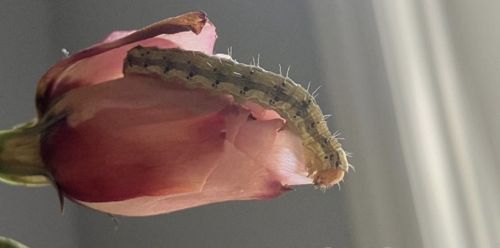Cabbage Looper (caterpillar stage)
Scientific Name: Trichoplusia ni
Order & Family: Lepidoptera, Noctuidae
Size: Larvae typically grow to 3-4 cm (1.2-1.6 inches) in length.

Natural Habitat
Agricultural fields, gardens, and areas with suitable host plants, often found on the underside of leaves or within plant foliage.
Diet & Feeding
Herbivorous, feeding on a wide variety of plants, especially cruciferous vegetables (cabbage, broccoli, cauliflower), but also beans, peas, potatoes, tomatoes, cotton, and many ornamental plants like roses.
Behavior Patterns
Cabbage loopers are named for their distinctive 'looping' movement, arching their back as they bring their posterior segments forward. They are primarily nocturnal feeders, though they can be found feeding during the day. As larvae, they undergo several molts before pupating, typically in a spun cocoon on a leaf. The adult moth is also nocturnal.
Risks & Benefits
Risks: Significant agricultural and garden pest, causing damage to leaves and heads of host plants, leading to reduced yield and economic losses. Benefits: None significant as a pest; however, as part of the ecosystem, they can serve as food for predatory insects and birds.
Identified on: 10/5/2025